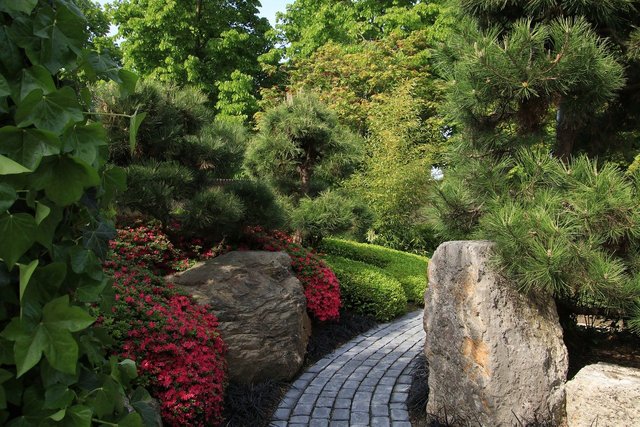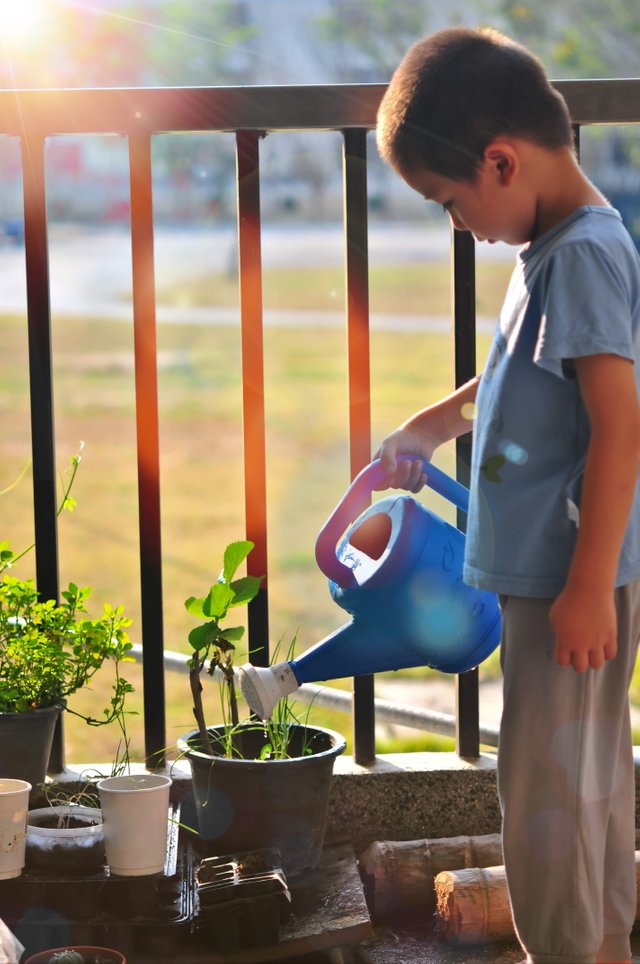Permaculture - Saving water in the garden; Mary Zemach techniques (lesson 34)
Saving water in the garden - Mary Zemach techniques
Water is essential to all life. Although it would seem that there are countless amounts of it around us, in fact only a tiny percentage of the total resources can be used by plants.
💦 70% of the planet is covered with water
💦 only 3% of that is freshwater
💦 0.75% is freshwater, outside glaciers (2,25% is frozen)
💦 0.375% is freshwater to which we have any access (not stored deep underground or frozen in glaciers)
To successfully design a water-rich garden, we must first ask ourselves "how does nature store water?" Of course, there are lakes, rivers, ponds, but otherwise, water is stored by nature in vegetation, in the air, in soil. It's purified by plants, animals, and wetlands, and drained through valleys. We can introduce all these elements to our garden by imitating and adapting to our conditions on a micro-scale.
As a basis for discussing water storage in gardens, which I will write about in the next few lessons, we will consider the project of the permaculturist Mary Zemach from Santa Fe, USA, a professor at the Permaculture Institute, who, thanks to her water storage skills, created a permaculture garden in the middle of the desert. It's resistant to drought for many months, it can last without the rain or watering for nearly half a year.
Mary Zemach uses five techniques:
- building high organic matter content
- deep mulching
- dense planting
- soil contouring
- locating plants according to water needs
Of course, as is always the case in permaculture gardens, no technique is limited to one benefit. In addition to storing water and increasing resistance to drought, the use of these methods increases the yield from the garden, lowers the temperature locally, protects the soil from erosion, increases biodiversity, and so on.
In the early stages of her garden design, Mary Zemach wanted to use a fairly common system of condensers that were supposed to be placed around the garden and automatically spray the vegetation. After consulting with fellow permaculture designer Ben Haggard, she changed her mind, considering the installation to be an unnecessary high expense. Pay attention to the keyword - consultation. Seeking advice and discussing your plans with other experienced permaculturists is the best way to start your garden or farm. Use collective knowledge - you will never be a specialist in every field yourself because it is simply impossible.
Building high organic matter content and deep mulching
.jpg)
The cheapest place to store water is soil. As I mentioned in previous lessons, humus and other organic matter act as a sponge, swelling to keep several times more weight in the water. Three liters of dry soil can store a liter of water. By skillfully building the soil, we can store in our backyard water supplies worth a small fortune, compared to the expenses that we would have to pay for taking it from the sink. Moreover, unlike pond water, moisture in the soil does not evaporate easily.
How much water the soil can store depends on its richness in organic matter. The 2% organic matter content in the soil can reduce the need to water the garden by 75% compared to the soil with 1% organic matter. Once stored in the soil, the water moves underground towards the rivers very slowly. Leaking down the hill to the valley with the river can take even the whole season. Thanks to this, our rivers and wild vegetation do not dry up after a few days of drought
I have written many times about how to build organic matter in the garden. For more information, check out my lessons in the "Fertilizers" and "Different types of beds" sections (for a complete list of lessons with links, see the end of this article). You will also find information on deep mulching in the previous lessons.
Dense planting

Dense planting involves planting high densities, preferably using allelopathy. Multilayer planting (trees, shrubs, annual plants) allows you to create a shade that reduces the temperature of the soil and slows down its drying out.
While most plants can not stand full darkening, some do quite well with partial shade. Examples include lettuce, cabbage, broccoli, and cauliflower, which like to spend the warmest part of the day in partial darkening.
Dense planting will be described better in the lesson about allelopathy. About the other two methods, i.e. soil contouring and locating plants according to water needs, nothing has been mentioned in my previous lessons yet, so we will devote the next two entries to them.
All my lessons are shared totally for free with a CC-0 license (which means you can copy my text and share it wherever you want to, without the need to mark me as an author). I hope it will bring you joy.
Previous lessons can be read here:
Fertilizers
2 - types of manure and when to use it
3 - Compost. Basics
4 - advanced composting
6 - Green manure
7 - Phytosanitary plants
8 - Mineral fertilizers
--------------------------------------------------
Soil and minerals
10 - Boron, Molybdenum, Copper, Magnesium
11 - Zinc, Calcium, Iron and other elements
12 -soil components: sand and clay
14 -soil components: calcium, microorganisms, minerals
15 -soil components: water and air
--------------------------------------------------
Space
17 - Sectors in Permaculture
18 - Zones & sectors, practical use
19 - Perfect size of your garden
20 - What to choose lawn or meadow?
22 - Water reservoirs in the garden
23 - Rock Garden
24 - Patchwalks
--------------------------------------------------
Basics of traditional permaculture
26 - Basic tips for permaculture gardeners
--------------------------------------------------
Different types of beds
28 - Raised beds/Lazy beds
31 - Hugelkultur
--------------------------------------------------
Food production
29 - homemade sugar in non-tropical climate



Congratulations, your nice post has been upvoted by the steem.skillshare curation trail!
If you wish to join as well our trail and support our community, other users, and earn the curation reward, please check out this post:
steem.skillshare curation trail post
With the help of Mary Zemach techniques, we can preserve and sustain our Earth's water as only 0.37 of 70 percent can be Used. We should apply this techniques in our farm and gardens to limit wastage of precious water.
Great post. It is essential to preserve the water. Thanks for posting these interesting lessons.